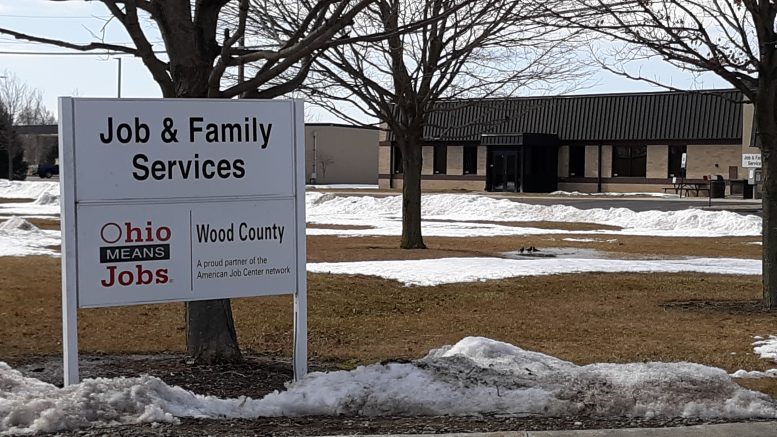By JAN LARSON McLAUGHLIN
BG Independent News
More than 20,000 Wood County residents are finding out that the extra social safety net in place for three years of COVID is about to end.
As the federal public health emergency declared during the pandemic is set to expire at the end of February, so too will the extra food assistance and the automatic Medicaid renewals.
That will affect the nearly 21,000 Wood County residents who rely on Medicaid and the 8,000 who receive help through SNAP – the Supplemental Nutrition Assistance Program.
Notices of the changes have been sent out from Ohio Job and Family Services – but so far few Wood County residents have acknowledged the notifications, said David Wigent, director of the Wood County Department of Job and Family Services.
“Unfortunately, just a few of them have responded,” Wigent said on Thursday.
“I’m worried that people are going to ignore the letters and calls until March 24,” when they would have normally received the second SNAP benefits for the month, Wigent said. “We expect a wave of concerned calls from March 24 through April.”
The end of the public health emergency status means those relying on SNAP for food will continue getting the benefit early each month – but will no longer get a secondary $95 toward the end of each month.
The safety net will also be removed for those who receive Medicaid coverage. As part of the federal COVID relief package passed in March 2020, states were barred from removing people from Medicaid during the public health emergency in exchange for additional federal matching funds.
That means Ohio will begin processing Medicaid redeterminations and disenrolling residents who no longer qualify starting April 1. The state has 14 months to review the eligibility of current Medicaid recipients.
“This is a big change for folks that have been receiving these extra benefits for the last three years,” said Laura Seifert, income maintenance administrator at Wood County Job and Family Services.
“In the past three years, even if someone became ineligible, they remained in the program,” Seifert said earlier this week on The Morning Show. Counties could only close cases if the recipients died or moved out of state.
Nationwide, roughly 15 million people could be dropped from Medicaid when the continuous enrollment requirement ends, according to an analysis by the Department of Health and Human Services.
Many who are disenrolled from Medicaid and who rely on the extra SNAP money, however, could qualify for other coverage, Seifert said. Wood County JFS staff will share information on other food assistance, such as the many local food pantries, Wigent said.
Seifert is also concerned that local SNAP and Medicaid recipients might not be aware of the changes despite the notifications.
“People do need to be aware of this so they can start adjusting to the change,” she said.
All Medicaid cases will have to go through the renewal process over the next year. Prior to terminating any cases, reviewers will determine if the recipient qualifies for any other Medicaid coverage category, Seifert said.
“Every case will be looked at,” she said of the 21,000 or so cases in Wood County. “The best thing people can do is stay in touch with us.”
Seifert stressed the need for local recipients to respond to requests for information, and follow through on the renewal process.
“Failure to do that could result in the loss of benefits,” she said.





